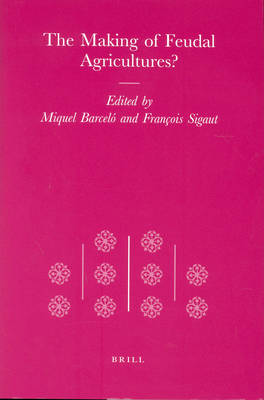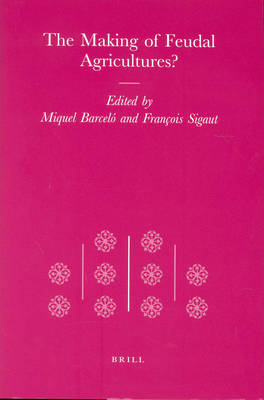
Je cadeautjes zeker op tijd in huis hebben voor de feestdagen? Kom langs in onze winkels en vind het perfecte geschenk!
- Afhalen na 1 uur in een winkel met voorraad
- Gratis thuislevering in België vanaf € 30
- Ruim aanbod met 7 miljoen producten
Je cadeautjes zeker op tijd in huis hebben voor de feestdagen? Kom langs in onze winkels en vind het perfecte geschenk!
- Afhalen na 1 uur in een winkel met voorraad
- Gratis thuislevering in België vanaf € 30
- Ruim aanbod met 7 miljoen producten
Zoeken
Omschrijving
Was there a discernible set of changes in the techniques of arable farming, animal husbandry and their associated technologies at the end of antiquity which marked a clear break with an established 'ancient world economy' and ushered in the 'new agricultures' of the early middle ages? Were such changes not already visible in antiquity? And what was the impact of political, economic, social and environmental change in these processes? The 6 papers in this volume reject simple evolutionary models charting progress from "protohistory" to the "Roman period" to the "Dark Ages" to the "Middle Ages" and insisted rather on the notion of inheritance, so that the farming economy laid down in protohistoric times continued to exist during the early Middle Ages. The collapse of a capitalistic commercial economy of the later Roman Empire though accompanied by political and military crises did not entail a regression of the farming economy. The growth in farming in the 8th - 9th C, resting on a demographic increase combined with intensive land clearance episodes, owed much to the preceding centuries: the change resides more in an intensification than in the introduction of new features. With contributions by Pascal Reigniez, Catherine Rommelaere, Georges Raepsaet, G. Comet, Aline Durand and Philippe Leveau.
Specificaties
Betrokkenen
- Auteur(s):
- Uitgeverij:
Inhoud
- Aantal bladzijden:
- 336
- Taal:
- Engels
- Reeks:
- Reeksnummer:
- nr. 14
Eigenschappen
- Productcode (EAN):
- 9789004117228
- Verschijningsdatum:
- 1/02/2004
- Uitvoering:
- Hardcover
- Formaat:
- Genaaid
- Afmetingen:
- 166 mm x 244 mm
- Gewicht:
- 748 g

Alleen bij Standaard Boekhandel
+ 254 punten op je klantenkaart van Standaard Boekhandel
Beoordelingen
We publiceren alleen reviews die voldoen aan de voorwaarden voor reviews. Bekijk onze voorwaarden voor reviews.









